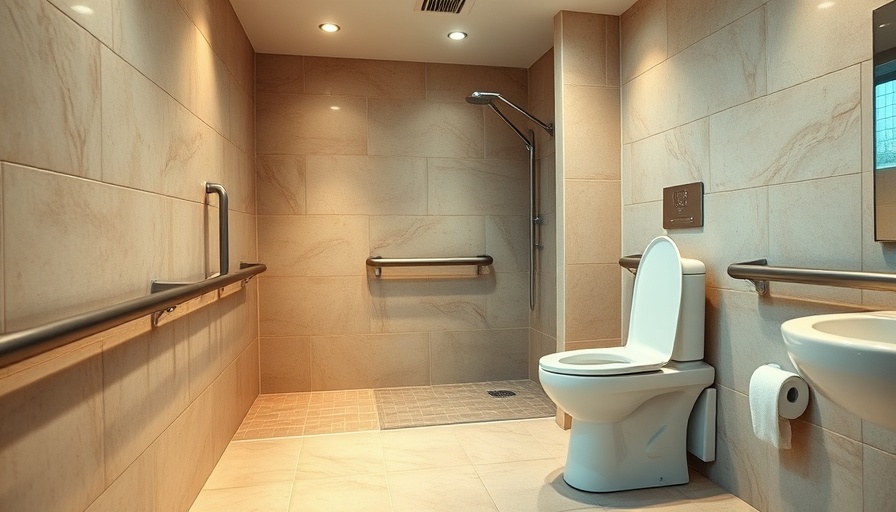
Creating Safe Spaces: Essential Modifications for Seniors
In today's society, where the population of seniors is on the rise, creating safe bathrooms is essential for maintaining independence and dignity. Each year, millions of adults aged 65 and older experience falls in the bathroom, highlighting the urgent need for modifications in home environments. As families in Toms River increasingly emphasize senior health and safety, understanding the importance of bathroom modifications becomes paramount for caregivers and loved ones alike.
The Reality of Bathroom Safety Risks
Bathrooms can pose significant risks due to their design. Wet surfaces and hard edges create ideal conditions for slips and falls, especially when mobility is impaired. According to the Centers for Disease Control and Prevention (CDC), falls are a leading cause of injury among older adults, and the bathroom is a frequent site for such incidents. By proactively making adjustments within these spaces, families can enhance their loved ones' safety and overall quality of life.
The Empowering Impact of Grab Bars
One of the most crucial modifications is installing grab bars. These simple yet effective tools significantly enhance bathroom safety. Strategically placed near the toilet and in the shower or tub, grab bars provide the necessary support for seniors transitioning between sitting and standing. The key is to ensure that they are securely anchored to walls and placed at various heights to suit the user's needs.
It’s not only about where grab bars are placed but also about their design and material. Options range from sleek stainless steel to colorful plastic varieties, catering to both safety and aesthetic preferences. Families should involve seniors in the selection process to foster a sense of ownership and independence.
Non-Slip Mats: A Simple Yet Effective Solution
While grab bars are often emphasized, non-slip mats are unsung heroes in bathroom safety. They provide essential traction and stability on slippery bathroom floors, reducing the risk of falls. Non-slip mats come in various styles, including mats designed for the shower or tub as well as larger area rugs that can cover wet bathroom floors.
Choosing the right non-slip mats involves consideration of material and placement. Rubber or vinyl options are ideal for the shower, while plush, water-resistant mats can work well near sinks or standing areas. Maintenance is straightforward as many mats can be machine washed, ensuring they remain clean and effective.
Leveraging Other Modifications for Enhanced Safety
Beyond grab bars and mats, other modifications can further improve safety in the bathroom. Install a raised toilet seat with armrests to facilitate easier transfers, or consider using a shower chair to provide stability while bathing. These additions come together to create an environment where seniors can confidently manage their hygiene with minimal assistance.
The Emotional and Psychological Benefits of a Safe Bathroom
Creating a safe bathroom is not solely about reducing physical risks; it significantly affects seniors' mental and emotional well-being. When seniors feel secure in their surroundings, they retain a sense of autonomy that fosters dignity and independence. By reducing accidents, families can alleviate anxiety and improve the overall quality of life for seniors.
The Bigger Picture: Aging in Place
As the trend of aging in place gains momentum, communities like Toms River need to advocate for accessible and secure living environments. Understanding the implications of bathroom safety extends into broader conversations about supporting seniors in every aspect of daily life. By emphasizing safety, we empower seniors to maintain their independence and improve their health outcomes.
Conclusion: Embrace Safety with Modifications
Bathroom modifications for seniors are not just necessary but essential for cultivating safety and independence. Simple adjustments, such as grab bars and non-slip mats, can dramatically transform bathrooms into safer spaces. For caregivers serving a growing senior population in Toms River, implementing these changes is a proactive way to show love and support.
By taking action to enhance bathroom safety, you are not just preventing accidents; you are enriching the lives of your loved ones and promoting their dignity in the process. Explore options, start conversations with family members, and take the first steps towards a safer bathroom.
 Add Row
Add Row  Add
Add 




Write A Comment